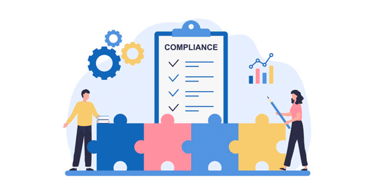 We often hear about DCAA compliant (or approved) accounting software as if there is such a thing. The DCAA evaluates a prospective contractors accounting system not based on rules related to compliance that were created within the agency, but rather by regulations primarily contained in the Federal Acquisition Regulations (FAR). The exception is found within the DCAA Manual 7641.90 with respect to Timesheet Preparation which is not rooted in the FAR or the DFARS that pertain to Department of Defense contractors.
We often hear about DCAA compliant (or approved) accounting software as if there is such a thing. The DCAA evaluates a prospective contractors accounting system not based on rules related to compliance that were created within the agency, but rather by regulations primarily contained in the Federal Acquisition Regulations (FAR). The exception is found within the DCAA Manual 7641.90 with respect to Timesheet Preparation which is not rooted in the FAR or the DFARS that pertain to Department of Defense contractors.
The FAR is comprised of 53 Parts, including three “reserved” parts that are without content. So then, what exactly within the myriad of regulations contained in the other 50 parts and subparts relate to a “compliant” cost accounting system? The long answer is references to the Cost Accounting Standards and phrases that contain words such as “adequacy of the contractor’s accounting system” and “cost accounting records” do appear throughout the FAR, including but not limited to FAR Parts 4 (Administrative Matters), 7 (Acquisition Planning), 9 (Contractor Qualifications), and 15 (Contracting by Negotiation). However, the short answer is that when it comes to the specific feature set of your accounting software, it boils down to six parts of the FAR in particular:
Part 16 – Types of Contracts (adequate contractor’s accounting system is required for most contract types)
Part 30 – Cost Accounting Standards Administration (application of CASB rules and regulations to negotiated contracts)
Part 31 – Contract Cost Principals and Procedures (allowable and unallowable costs)
Part 32 – Contract Financing (progress payments based on costs)
Part 42 – Contract Administration and Audit Services (direct reference to DCAA and a subpart on indirect cost rates)
Part 52 – Solicitation Provisions and Contract Clauses (invoicing, limitation on payments, limitation of funds, allowable costs and payment)
These are the six specific sections of the FAR that you should most familiarize yourself with in relation to your accounting software and its suitability for handling cost reimbursable or flexibly-priced government contracts. To be certain, there are other parts of the FAR that are relevant and where it would be desirable to have an adequate cost accounting system in operation, such as Part 43 (Contract Modifications) and Part 49 (Termination of Contracts). However, the six parts as outlined above are most pertinent when it comes to your internal capacity and controls to administer and report on negotiated federal contracts and be prepared for follow-on DCAA audits.
SYMPAQ cost accounting software provides true FAR compliance and enables a contractor to provide federal government auditors with all of the information they might request while conducting a review or an audit.



